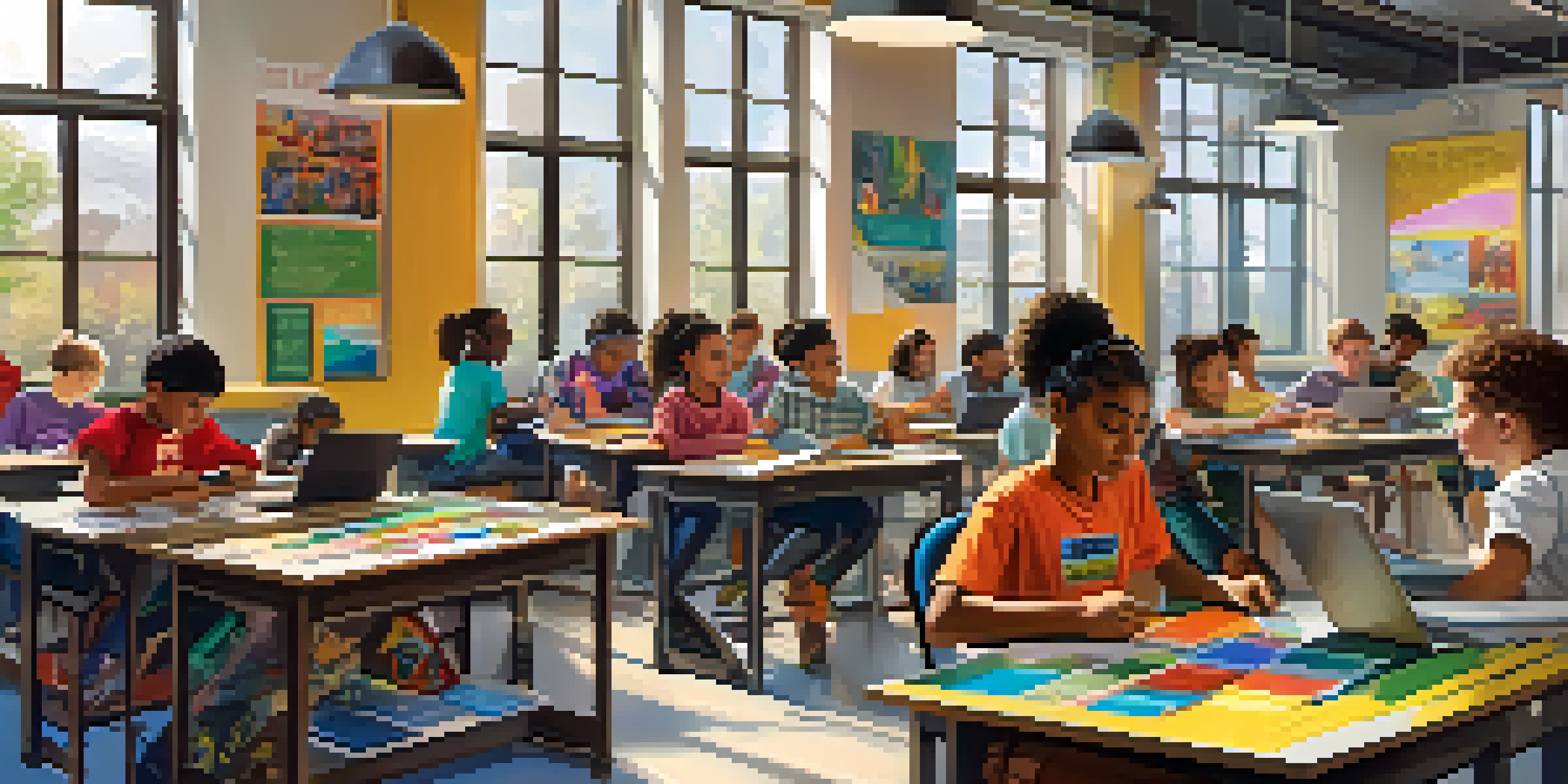Utilizing Community Resources for STEAM Education

Understanding the Importance of STEAM Education
STEAM education, which stands for Science, Technology, Engineering, Arts, and Mathematics, plays a crucial role in preparing students for the future. In a world increasingly driven by technology and innovation, integrating these disciplines fosters critical thinking and creativity. By emphasizing the 'A' for Arts, STEAM encourages a more holistic approach to learning, aligning well with real-world applications.
Education is the most powerful weapon which you can use to change the world.
The demand for STEAM skills in the job market is growing, with many industries seeking professionals who can think outside the box. According to research, jobs requiring STEAM-related skills are expected to increase significantly in the coming years. Therefore, providing students with robust STEAM education is not just beneficial; it is essential for their future success.
However, delivering quality STEAM education often requires more than what traditional classrooms can offer. This is where community resources come into play, providing valuable opportunities and experiences that enrich the educational landscape.
Identifying Local Community Resources for STEAM
Community resources can include libraries, museums, science centers, and local businesses, each offering unique tools and experiences for STEAM learning. For instance, a local science museum might host workshops or provide access to specialized equipment that schools cannot afford. Engaging with these resources allows educators to enhance their curriculum and provide students with hands-on learning opportunities.

Additionally, community organizations often have programs designed to inspire interest in STEAM fields. For example, a local university may run outreach programs that connect students with mentors in various STEAM careers. These partnerships not only enrich the learning experience but also help students envision themselves in these fields.
STEAM Education Prepares for Futures
Integrating Science, Technology, Engineering, Arts, and Mathematics fosters critical thinking and creativity essential for students' success.
Leveraging local resources can also foster a sense of community ownership in education. When students see their community actively participating in their learning journey, it builds pride and investment in their educational outcomes.
Collaborating with Local Businesses for STEAM Projects
Local businesses can play a pivotal role in supporting STEAM education through partnerships and sponsorships. By collaborating with schools, businesses can provide real-world insights and resources that enhance learning. For instance, a tech startup might sponsor a coding workshop, offering students a taste of industry practices and expectations.
The future belongs to those who believe in the beauty of their dreams.
Moreover, these collaborations often lead to internship opportunities for students, giving them hands-on experience in a professional environment. This exposure is invaluable, as it helps bridge the gap between classroom learning and real-world application, making the concepts learned in school more tangible.
Ultimately, when businesses invest in education, they are also investing in a skilled workforce for the future. This mutual benefit creates a cycle of support that enriches both students and the local economy.
Engaging Nonprofit Organizations for STEAM Support
Nonprofit organizations are another vital resource for enhancing STEAM education. Many nonprofits focus specifically on promoting science and technology education, often providing free or low-cost programs for students. These organizations can offer a wealth of resources, from workshops to after-school programs, that schools may not be able to provide on their own.
For example, a nonprofit focused on environmental science might partner with schools to create hands-on projects that engage students in real-world issues. By working together, schools can leverage these resources to create more dynamic and relevant learning experiences.
Community Resources Enhance Learning
Local libraries, museums, and nonprofits provide valuable hands-on experiences that enrich traditional educational approaches.
Engaging with nonprofits not only enhances the educational experience but also fosters a sense of civic responsibility among students, encouraging them to think critically about their roles in addressing societal challenges.
Utilizing Libraries as STEAM Learning Hubs
Libraries have evolved beyond mere book repositories; they are now vital hubs for STEAM education. Many libraries offer access to technology such as 3D printers, coding classes, and robotics programs, providing students with hands-on experience. Utilizing these resources can greatly enhance students' understanding and interest in STEAM disciplines.
In addition to technology, libraries often host workshops and guest speakers from various STEAM fields. These events can inspire students by exposing them to diverse career paths and innovative ideas. Such interactions can ignite passion in students, encouraging them to explore further.
Furthermore, libraries are excellent spaces for collaboration, where students can work on group projects and share ideas. This collaborative environment fosters creativity and teamwork, essential skills in any STEAM career.
Encouraging Parent and Community Involvement in STEAM
Parental and community involvement can significantly enhance STEAM education initiatives. When parents participate in their children's learning experiences, it reinforces the importance of STEAM subjects at home. This involvement can take many forms, from volunteering in classrooms to attending community STEAM events.
Additionally, engaging the community can bring in diverse perspectives and expertise. Local professionals can be invited to speak in classrooms or participate in career days, providing students with mentorship and guidance. This not only enriches the educational experience but also helps students build a network of support.
Collaboration Boosts STEAM Initiatives
Partnerships with local businesses and community members create sustainable programs that support and engage students in STEAM fields.
Creating a culture of collaboration among parents, educators, and community members can lead to innovative ideas and initiatives that improve STEAM education. Together, they can work towards creating a robust educational ecosystem that supports student learning.
Creating Sustainable STEAM Programs with Community Support
Sustainability is key when establishing successful STEAM programs. Community support is essential for ensuring these initiatives can continue to thrive over time. By forming partnerships with local organizations, schools can secure the resources needed to maintain and expand their STEAM offerings.
For instance, schools can collaborate with businesses to secure funding for ongoing projects or materials. Additionally, involving community members in program development can help align initiatives with local needs and interests, ensuring they remain relevant and engaging for students.

Finally, creating a feedback loop where students and community members can share their experiences and suggestions will help programs evolve. This continuous improvement will foster a culture of innovation, keeping STEAM education fresh and exciting.
Measuring the Impact of Community Resources on STEAM Education
To truly understand the effectiveness of community resources in STEAM education, it is essential to measure their impact. Schools can gather feedback from students, parents, and educators to assess how community involvement has influenced learning outcomes. Surveys, interviews, and focus groups can provide valuable insights into what works and what needs improvement.
Additionally, tracking student participation in community-led STEAM initiatives can offer quantitative data on engagement levels. This information can help schools identify trends and areas for growth, allowing them to tailor their programs accordingly.
Ultimately, measuring impact not only highlights the successes of community resources but also provides a roadmap for future initiatives. By continuously assessing and refining their approaches, schools can ensure they are making the most of the resources available to them.